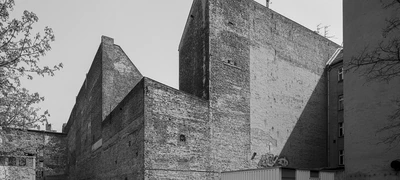Wanderings About History. The Photography of Ulrich Wüst

The work of Ulrich Wüst first attracted attention in the 1980s, above all on account of his many Cityscapes, taken in several towns around the GDR. These images show scarring from the Second World War and an unchecked decay of historical built fabric. At the centre of his photographic interest, however, were those absurdities in urban situations that derive as much from a lack of attention or cluelessness as from wanton destruction or uncontrolled development. With his camera, Wüst evolved his own, very visual way of critiquing architecture. It has lost none of its poignancy today, especially as his argument is never ideological but borne along by a sense of phenomena that offers as much scope for subtle humour as for irony. A wider international audience discovered Ulrich Wüst’s photography when he was invited to exhibit at documenta 14 in Kassel in 2017.
2 Stops
Melbourne, Australia
RMIT Gallery, Royal Melbourne Institute of Technology
2024
29.02.–20.04.
Busan, South Korea
GoEun Museum of Photography
2023
22.07.–05.11.
Artists
3 Contributors
Matthias Flügge,
Ulrich Wüst,
Concept
Alexander Lisewski,
Project Management ifa
About the exhibiton
Ulrich Wüst’s photographic œuvre, which explores Eastern Germany in the broader sense, is not confined to the sunken GDR. It might be described as a pictorial archaeology of our present day. These pictures reveal the finds from his “excavations” and are at the same time tools of their conservation. Wüst has an infallible feel for the graphic quality of everyday situations, objects and materials, but also for the deeper layers of significance associated with found images. Examples are the enlarged details from East German press products that demonstrate a manipulative use of photography.
Ulrich Wüst’s photographic work can be contemplated from different perspectives. While the observations captured here are essentially rooted in Germany’s division and its mending, at the same time they always relate to universal phenomena of social change and its material manifestations. The seemingly terse images, extremely precise in their composition, are the fruits of lengthy visual wanderings through present sites of recent history.
Matthias Flügge